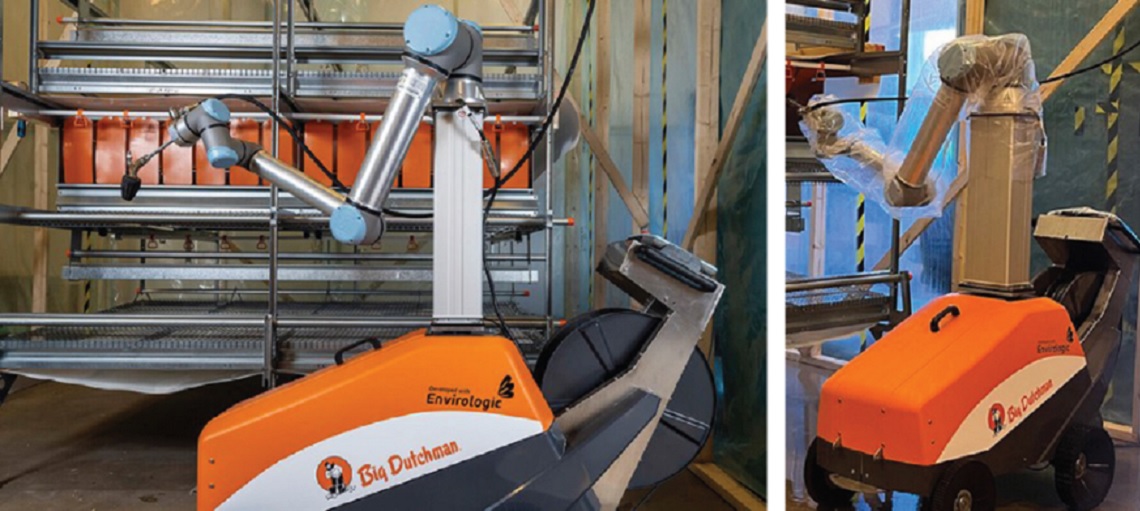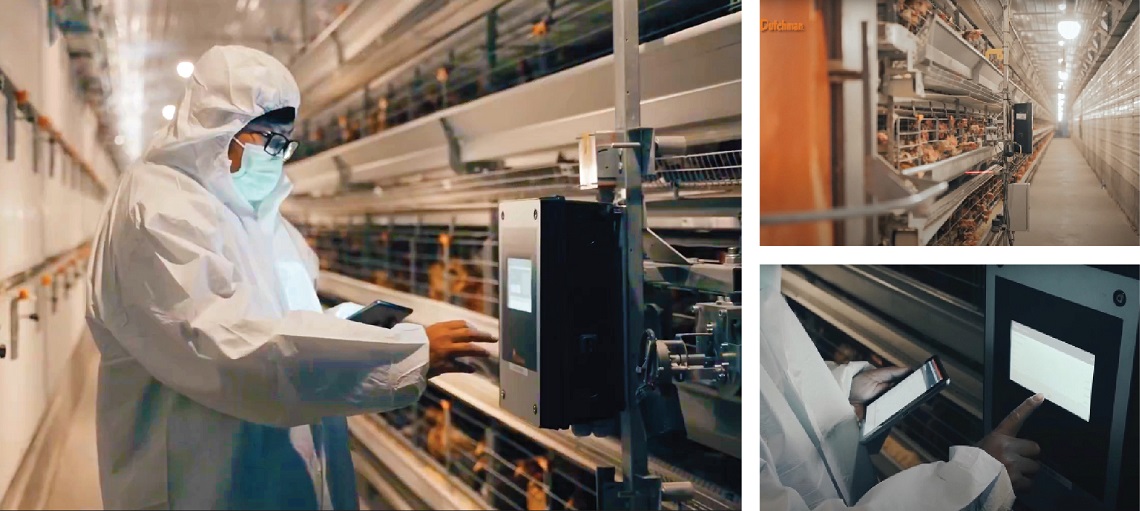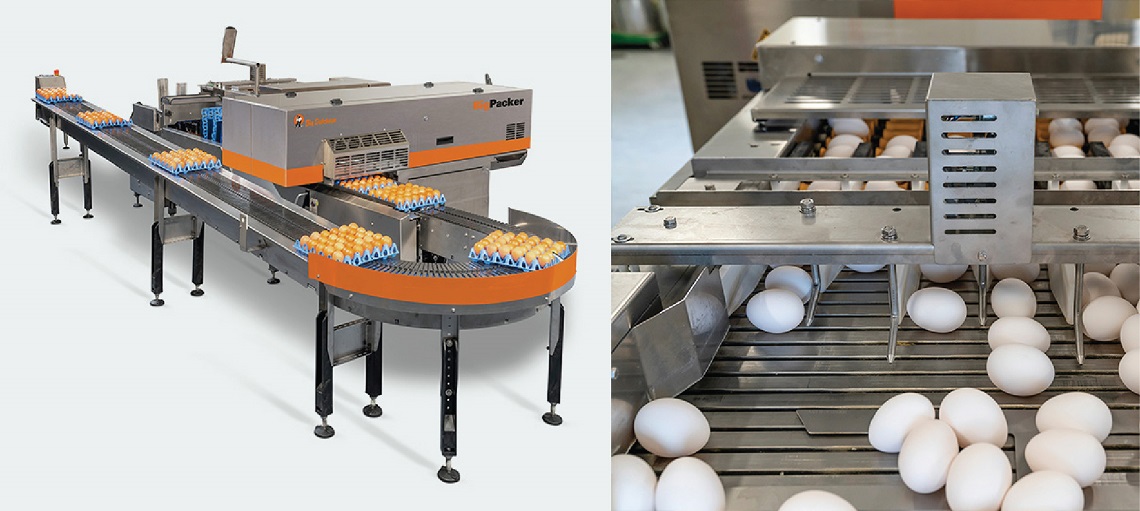The Future of Egg Production: Robotics and Automation in Poultry Farming
The integration of robotics in egg production is revolutionising the poultry industry, driving significant advancements in efficiency, animal welfare, and disease prevention. As global demand for eggs rises, poultry farmers face mounting pressure to boost productivity while upholding stringent hygiene and animal care standards. Robotics provides an innovative solution to these challenges, enabling precision management, reducing dependency on manual labour, and strengthening biosecurity measures.
Opportunities for Egg Producers
Robotic solutions in poultry farming offer numerous benefits, including:
- Enhanced Efficiency: Automated systems streamline daily operations, reducing labour demands for essential tasks such as cleaning, monitoring, and farm management.
- Improved Animal Welfare: Smart monitoring technologies enable early detection of health issues, allowing for timely interventions that minimise bird stress and mortality.
- Biosecurity and Disease Control: By limiting human interaction with poultry, robotic systems lower the risk of disease transmission, enhancing farm hygiene and overall biosecurity.
- Data-Driven Decision Making: IoT-based farm management systems provide real-time monitoring and analytics, equipping farmers with valuable insights to optimise productivity and sustainability.
Despite these benefits, the widespread adoption of robotics in poultry farming presents certain challenges.
Challenges of Adopting Robotic Technology in Asia
While automation has gained traction in Western poultry farms, Asia faces unique hurdles in adopting these technologies. Key challenges include:
- High Initial Investment: Many Asian poultry farms operate on a smaller scale, making the upfront cost of robotic solutions a significant barrier to entry.
- Integration with Existing Infrastructure: Traditional farms often require substantial modifications to accommodate advanced automation systems, necessitating additional investment.
- Technical Knowledge and Training: The successful implementation of robotics requires skilled personnel to manage and maintain these systems, which may be scarce in some regions.
- Regulatory and Market Factors: Government policies, industry regulations, and market acceptance of automation vary across Asian countries, influencing the pace of adoption.
Despite these challenges, the potential of robotics in poultry farming is undeniable. At Big Dutchman, are at the forefront of this transformation, offering cutting-edge solutions to enhance efficiency and sustainability in egg production.
Big Dutchman’s Advanced Robotics for Poultry Farming
1. Sharky 430: The Autonomous Cleaning Robot

The Sharky 430 is an innovative robotic cleaning solution tailored specifically for rearing and laying aviaries. Developed in collaboration with Envirologic, this autonomous cleaning robot operates without guide rails, making it highly adaptable to various farm layouts. Its key features include:
- Flexible Cleaning Arm: Designed to reach traditionally inaccessible areas such as nests, perches, and inner troughs, ensuring a thorough cleaning process.
- 24/7 Autonomous Operation: Functions continuously, including at night, reducing labour requirements and improving overall efficiency.
- Enhanced Biosecurity: By minimizing human exposure to poultry environments, the Sharky 430 helps prevent disease transmission, fostering a healthier farm ecosystem.
- Cost Savings: Reduces reliance on manual labour, leading to lower operational costs and improved long-term profitability.
2. Vitality Monitoring System (VIM): Revolutionising Poultry Health Management

The Vitality Monitoring System (VIM) is an advanced tool that continuously assesses the health and well-being of poultry flocks using state-of-the-art sensors and data analytics. This system plays a crucial role in:
- Early Disease Detection: By tracking key health indicators, VIM enables farmers to identify potential health issues before they escalate, ensuring timely intervention.
- Animal Welfare Enhancement: The system provides insights into flock behaviour and well-being, allowing farmers to adjust management practices to reduce stress and improve productivity.
- Optimised Production: Proactive health management minimises disruptions in egg production, ensuring consistent yields and better overall farm performance.
3. Big Packer: The Professional Farm Packer

Big Packer is an advanced farm packing system designed for efficiency, easy maintenance, and gentle egg handling. This automated solution cleans, transports, and packs eggs onto trays with minimal human intervention, ensuring smooth and seamless operation.
- Efficient, Continuous Packing: Eliminates delays by ensuring a steady packing flow without waiting for a full row of eggs.
- Gentle Egg Handling: Thoughtfully engineered technology ensures that eggs are transported safely and securely.
- Ease of Operation: User-friendly controls and management systems make operation straightforward.
- Fast and Easy Maintenance: Accessible design allows for quick cleaning and upkeep, reducing downtime.
- Compact and Durable Build: Designed for long-term use with a robust structure that enhances reliability and service life.
The Future of Robotics in Poultry Farming Looks Bright
The future of egg production is being shaped by innovative robotic solutions that enhance efficiency, improve animal welfare, and strengthen biosecurity measures. While challenges remain, particularly in Asia, the benefits of automation far outweigh the hurdles. As technology advances and costs become more accessible, the adoption of robotics in poultry farming is expected to accelerate. Companies like Big Dutchman are leading this transformation, offering pioneering solutions that empower poultry farmers to achieve sustainable and profitable operations.

